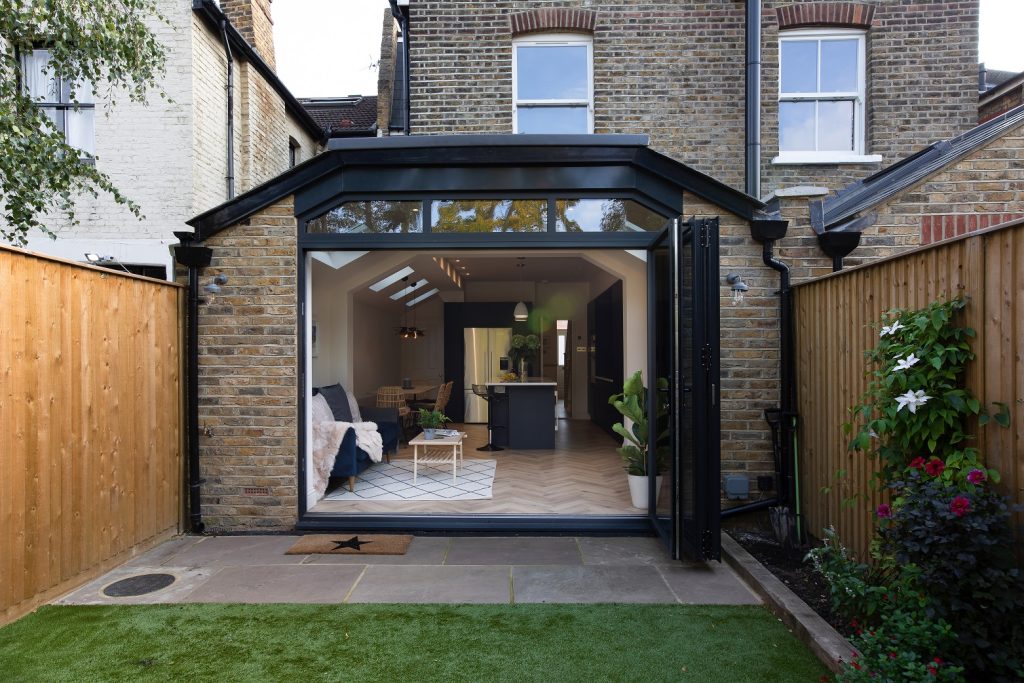What is a ground floor extension?
Ground floor extensions are a popular home improvement project for homeowners looking for a change but don’t want to move. It is a great to add value and extra living space to your home. The possibilities of this extension are endless: a new kitchen, dining room, family room, or even a conservatory.
Benefits of ground floor extension:

One of the main benefits of adding a ground floor extension is the increase in living space; especially useful if your current home feels cramped or if you have a growing family. It is a cheaper option than moving but a great way to optimise the potential for your space.
Also, a well-designed and built ground floor extension can add significant value to your property, making it a worthwhile investment.
Do you need planning permission for a ground floor extension?

Getting planning permission for an extension is not as complicated and daunting as it might first appear. If your extension is within your permitted rights, you do not need a planning permission.
You do need planning permission for an extension if:
- More than half of the land around the ‘original house’ is to be covered
- Materials used are not similar to the existing house (except for conservatories)
- Is higher than the highest point of the roof
- The eaves and ridge height are higher than the existing house
- Extend beyond the rear wall of a detached house by more than 3 meters (if it is within 2 meters of the boundary)
- Addition of verandas, balconies or raised platforms
How much does it cost to extend your ground floor?

The cost of extending your ground floor will depend on a variety of factors, including the size and complexity of the project, the materials used, and the location and design of your home.
To get a more accurate estimate of the cost of a ground floor extension for your home, get in touch with us to get a free quote.
What factors are to be considered when designing and building the extension?

There are several factors to consider when designing and building a ground floor extension, including:
- Purpose of the extension: Consider the purpose of the extension and how it will be used.
- Size and layout: Determine the size and layout of the extension based on the purpose and your budget. Consider the traffic flow and how the extension will fit into the overall layout of your home.
- Materials: Choose durable materials, low maintenance, and in keeping with the style of your home. Consider the cost and sustainability of different materials.
- Lighting and ventilation: Proper lighting and ventilation are one of the most important things in any extension. Consider the location of windows and doors and the type of lighting that you will use.
- Budget: Determine your budget for the extension and make sure that you stick to it.
- Planning and building regulations: Check with your local planning authority to determine what planning and building regulations apply to your project.
Ground floor extension ideas and trends

There are many stunning ways to extend the ground floor of your home. Here are a few ideas and trends to consider:
- Open-plan kitchen and living room: A popular trend in ground floor extensions is to create an open-plan kitchen and living room. This can be a great way to create a more social and spacious living area.
- Single-story extension: A single-story extension can be a cost-effective way to add extra space to your home. This type of extension is often used to create a new kitchen, dining room, or family room.
- Two-story extension: If you need more space, a two-story extension can be a good option. This can be used to create additional bedrooms or a home office.
- Wrap-around extension: A wrap-around extension is a type of extension that wraps around the side and rear of a property. This can be a good option if you have a large garden and want to create a more seamless connection between the inside and outside of your home.
- Conservatory: A conservatory is a type of extension that is made up of a glass roof and walls. This can be a good option if you want to bring in more natural light and create a light and airy space.
New trends in ground floor extensions include an emphasis on energy efficiency. With the energy crisis, it is wise to use energy-efficient appliances, well insulated doors, and windows.
Hope your brain is now packed with ideas! If you are considering a home extension, GDB is a perfect place to start your home extension journey. Get in touch with our expert team for a free consultation to discuss your project in detail.





